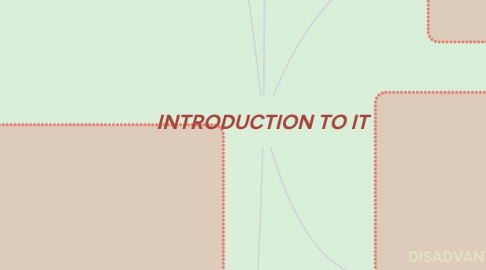
1. APPLICATIONS
1.1. Education
1.1.1. eg : Learning Management System
1.1.2. Computer Based Training
1.2. Finance
1.2.1. eg : Online Banking
1.2.2. Finance Investment System
1.3. Government
1.3.1. eg : E-filing
1.3.2. E-Syariah
1.4. Health care
1.4.1. eg : Medline
1.4.2. Counter Registration System
1.5. Science
1.5.1. eg : Virtual reality
1.5.2. Hawk Eye Officiating System
1.6. Publishing
1.6.1. eg : Online newspaper
1.6.2. Online magazine
1.7. Travel
1.7.1. eg : GPS
1.7.2. Online Reservation System
1.8. Manufacturing
1.8.1. eg : Computer- Aided Design
1.8.2. Computer Aided Manufacturing
2. CATEGORIES OF COMPUTERS
2.1. Supercomputer
2.1.1. Define
2.1.1.1. Fastest and most powerful computer
2.1.2. Size
2.1.2.1. occupy a full room of equipment
2.1.3. Speed
2.1.3.1. Tens of thousands of processor
2.1.4. Storage
2.1.4.1. Extremely large storage
2.2. Mainframe
2.2.1. Define
2.2.1.1. Large and powerful computer that can handle many users at single time
2.2.2. Size
2.2.2.1. occupy partial room to a full room equipment
2.2.3. Speed
2.2.3.1. Dozens of processors
2.2.4. Storage
2.2.4.1. Very large & addable storage
2.3. Personal Computer
2.3.1. Define
2.3.1.1. A computer that can perform all of its input, processing, output and storage activity by itself
2.3.2. Size
2.3.2.1. Fits on a desk
2.3.3. Speed
2.3.3.1. Single processors
2.3.4. Storage
2.3.4.1. Large
2.4. Mobile computer
2.4.1. Define
2.4.1.1. personal computer you can carry from place to place
2.4.2. Size
2.4.2.1. Fits on your lap or in your hand
2.5. Mobile devices
2.5.1. Define
2.5.1.1. Computing device small enough to hold in your hand
2.5.2. Size
2.5.2.1. Fits in the palm of your hand or a pocket size
2.6. Embedded Computers
2.6.1. Define
2.6.1.1. Function as a component in a larger product
2.6.2. Size
2.6.2.1. Miniature or small

